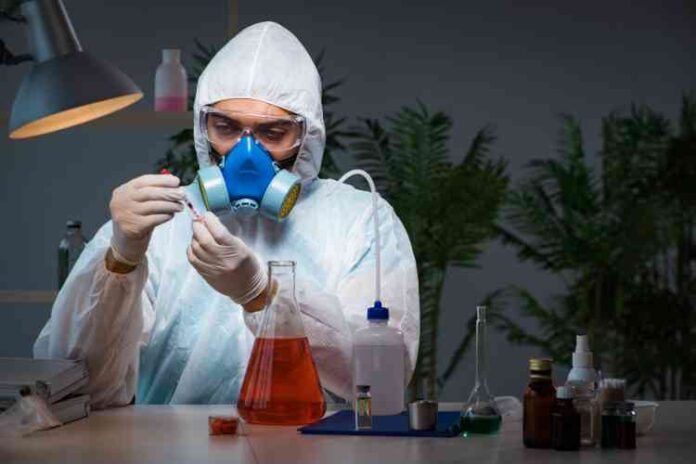Understanding toxic substance surveillance is essential for keeping people safe, so let’s delve into this mysterious world of cryptic secrets and learn more about how it works.
Most of us think of chemical monitoring as an activity for the government, but it’s actually a joint effort between public and private entities. Private companies monitor their operations and discharge sites for signs of contamination while keeping tabs on competitor activities to ensure that they comply with applicable regulations.
In this blog post, we’ll discuss the importance of chemical surveillance and how it works to keep us safe. We’ll also talk about some of the tools used in toxic substance monitoring, such as air quality monitors, water samplers, soil sensors, and other devices that detect hazardous materials in the environment.
What is toxic substance surveillance, and why is it important for you to know about it?
Toxic Substance Surveillance (TSS) is a vital system that tracks hazardous chemicals with the potential to harm human health and the environment.
It involves monitoring activities, sampling and analyzing substances, and reporting results to relevant authorities. Being aware of TSS is crucial for ensuring the safety of individuals and communities.
Familiarizing yourself with TSS can help you better understand the risks associated with different substances and how to avoid exposure.
The Different Types of Surveillance Tools Used for Toxic Substance Detection
In today’s world, detecting toxic substances has become a matter of utmost importance. With numerous different types of substances threatening the environment and human health, the need for sophisticated surveillance tools has never been greater.
Fortunately, advancements in technology have led to the development of tools that aid in the detection of hazardous materials.
These tools range from sophisticated sensors that can detect trace elements of toxins to drones that fly over potentially contaminated areas to gather data.
The diverse array of surveillance tools available allows for a comprehensive approach to detecting toxic substances, ultimately keeping both people and the environment safe.
How Technology Can Help Monitor Toxic Substances in Your Home and Workplace
The importance of monitoring toxic substances in our homes and workplaces cannot be overstated. These hazardous materials can have serious health implications and may even lead to long-term illnesses.
Fortunately, technological advancements provide us with tools to keep a constant watch on these threats. Sophisticated sensors, apps, and monitoring systems can help detect toxic substances in our surroundings and alert us accordingly. With real-time data analysis and continuous monitoring, we can identify contaminants before they cause harm.
Furthermore, there are a variety of devices that can be installed in homes and offices to monitor the air quality and detect harmful substances. With technology at our fingertips, we now have the power to safeguard our health and the environment from hazardous materials.
The Dangers of Not Knowing About Toxic Substance Surveillance
Toxic substances are present in our daily lives, and not knowing about them could be dangerous. From household cleaning products to industrial waste, exposure to these substances can lead to serious health problems.
Without proper monitoring and timely intervention, toxic substances can contaminate air, water, and soil, causing irreversible damage to the environment and human health. It’s important to stay informed about toxic substance surveillance and take the necessary precautions to minimize exposure. A
Steps You Can Take to Better Protect Yourself from Unwanted Exposure to Hazardous Materials
With hazardous materials lurking in many places, it can be frightening to think about the potential dangers that exist. Fortunately, there are steps you can take to better protect yourself from unwanted exposure to these materials.
One of the most important things to do is be aware of your surroundings. Look for warning signs and labels, and make sure to follow safety procedures in areas where hazardous materials may be present. It’s also a good idea to wear protective gear, such as gloves and masks, when dealing with these materials.
Lastly, always dispose of hazardous waste properly, and never hesitate to seek medical attention if you believe you may have been exposed to a hazardous material. By taking these steps, you can help ensure your safety and potentially avoid serious health risks.
Final Thoughts on Taking Control of Your Environment and Understanding the Risks of Toxic Substance Exposure
As we reach the end of our discussion on taking control of our environment and understanding the risks of toxic substance exposure, it’s important to reflect on the importance of self-awareness and taking preventative measures. Our daily routines, the products we use, and the environments we frequent can all contribute to our exposure to harmful substances.
By staying informed and actively seeking out ways to reduce our exposure, we can protect ourselves and those around us. Remember to read labels, seek out alternative products, and be mindful of the air quality in the places we spend the most time. It’s up to us to take control of our surroundings and safeguard our health.
Knowing how to protect yourself and your family from toxic substances is essential for health and safety. With the right information, tools, and technology, you can take charge of your environment and mitigate any harmful risks associated with exposure to hazardous materials.
Every dollar invested in toxic substance surveillance not only safeguards our health but also protects us from costly environmental cleanup events. Implementing preventive measures like using air filters and other toxins-testing technology at home or in the workplace is an important step in creating a safe and secure environment. Investing in cleaning equipment that is up-to-date with the latest standards is also crucial.
